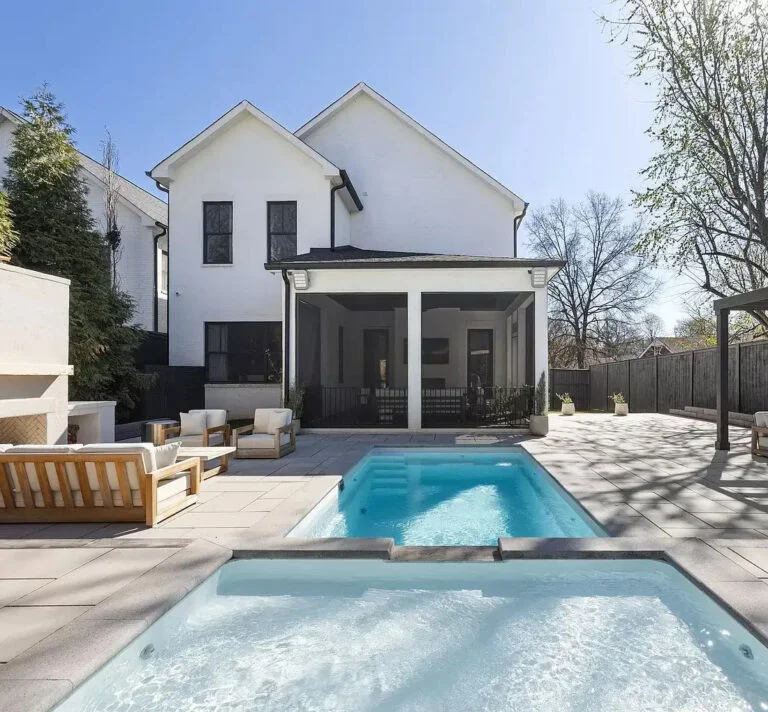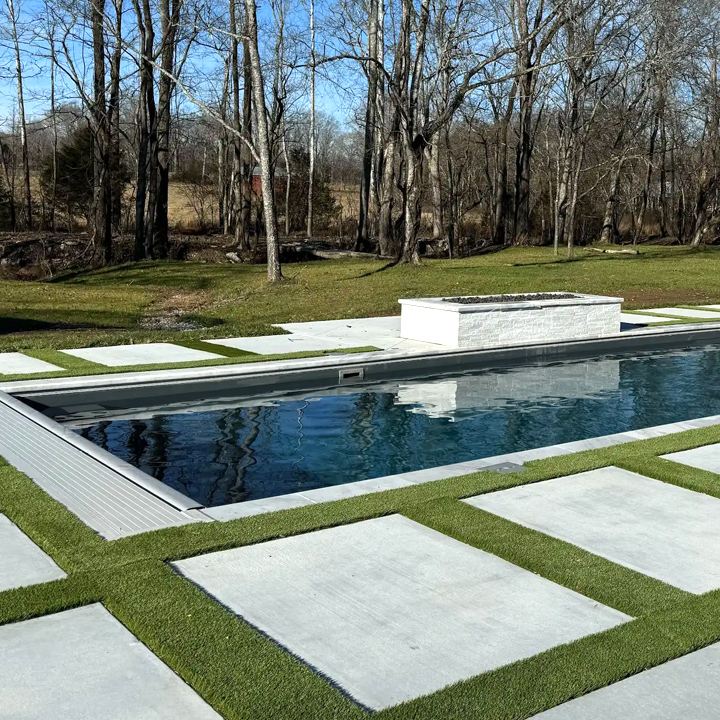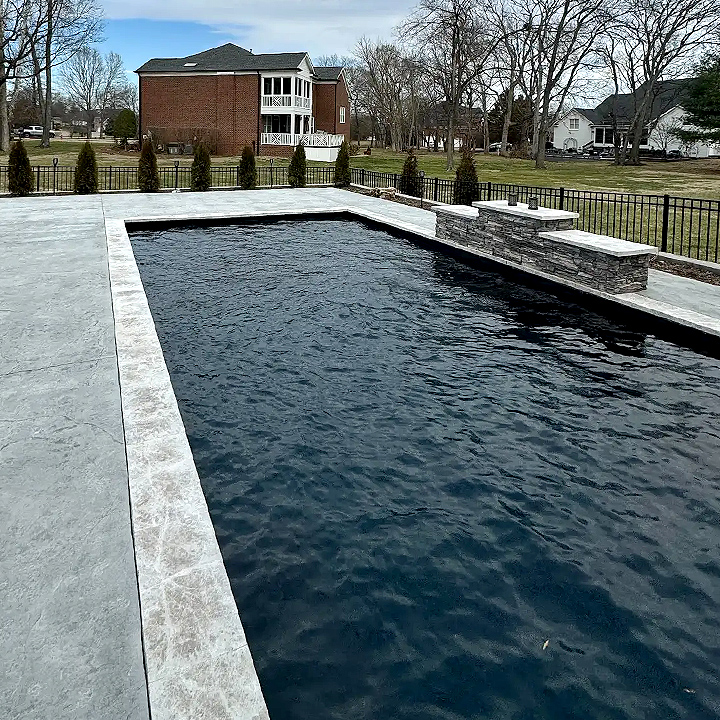Custom-Designer and Fast Builder





We’re excited to offer a wide selection of sought-after, easily customizable features to elevate your next fiberglass swimming pool project.

Raised Wall Sheers & Scuppers

LED Lighting

Automatic Pool Cover

Spas & Tanning Ledges

Turf

Concrete & Paver Decking


After finalizing the layout and design of your new fiberglass pool, obtaining HOA approval, and securing local permits, we’ll arrange an on-site meeting with you, your sales representative, and your project manager for the duration of your project.
We’ll map out your vision with you using our state-of-the-art design software, and make sure all measurements and elevation changes are correct. We’ll also set the benchmark where you want your pool to sit, and we’ll walk you through all the final details before starting your project.
After the dig is complete, we’ll place a two-inch thick layer of gravel in the hole for the fiberglass pool shell to rest on. The gravel is compacted to ensure the floor is stable for a solid foundation.
This gravel base determines the benchmark for where the pool will be set. We use a laser level to precisely obtain the right elevation to make sure everything is perfect!
Your pool shell will normally be lifted into place by a crane (unless your backyard is large enough to allow access to use excavators).
Now that your pool is set, it’s time to make sure it’s properly plumbed and connected to the equipment pad to ensure proper water flow.
A fiberglass pool system includes two major components:
1. The pump
2. The filter
The basics of plumbing the pool include fitting a skimmer box, installing deep-end suction fittings, and installing return fittings. PVC pipe is then installed from these items to the pump and filter. After these steps are completed, the pump, filter, and salt system are installed.
At the equipment pad, you also typically find other elements such as valves to control water flow, salt water chlorinators, automation controls (if upgraded), and a heater if desired. We’ll house the pump and filter system in a discreet location, so you can enjoy your pool without the noise of equipment running nearby.
Getting water into the pool simultaneously while your pool is being backfilled with gravel is imperative. Doing so will help create the perfect balance of pressure and stability on both sides of the fiberglass walls.
Once the pool is backfilled, reinforcing rebar is attached to the perimeter of the pool for added strength.
After the rebar is bonded/grounded, concrete is poured approximately eight inches thick around the perimeter, which creates a mechanical lock.
This footing/bond beam makes the pool much stronger and gives stability to the coping finish (which we’ll discuss in the next step). Our electrician will have begun wiring the pool equipment in this phase.
With your new fiberglass pool filled and inspected, our team is ready to install the coping around the top of the pool shell and bond beam. Once the coping is installed, the decking is finished, along with any landscaping and fencing.
Endless options for coping and decking exist, so you’ll have the chance to elevate the look and design of your new backyard pool!

Quick
Installation

Award-Winning,
Fiberglass Pool Builder

Transparent
Pricing

Customized to
Your Needs
We can build a fiberglass pool faster than anyone! Here’s a breakdown of what you can expect:
We offer transparent pricing (Many other pool builders don’t until after the fact). We recommend budgeting for all of the following services and products:
Delivering top-quality, long-lasting luxury custom pools to homeowners across Tennessee